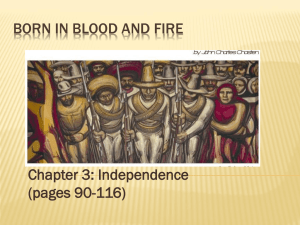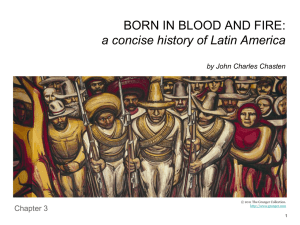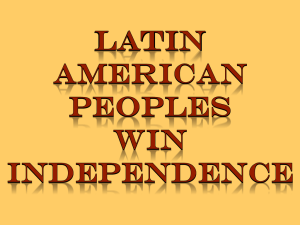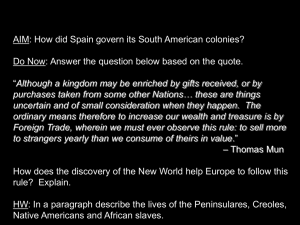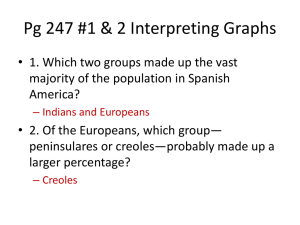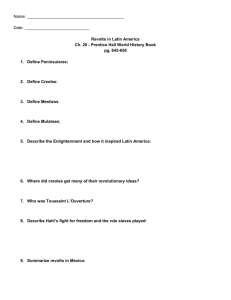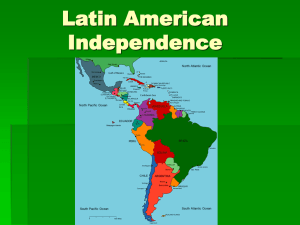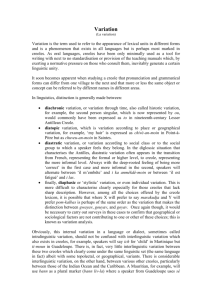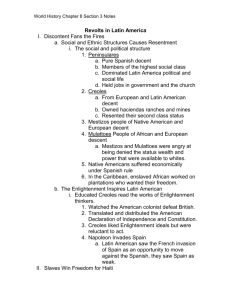YJJ Script for Causes
advertisement
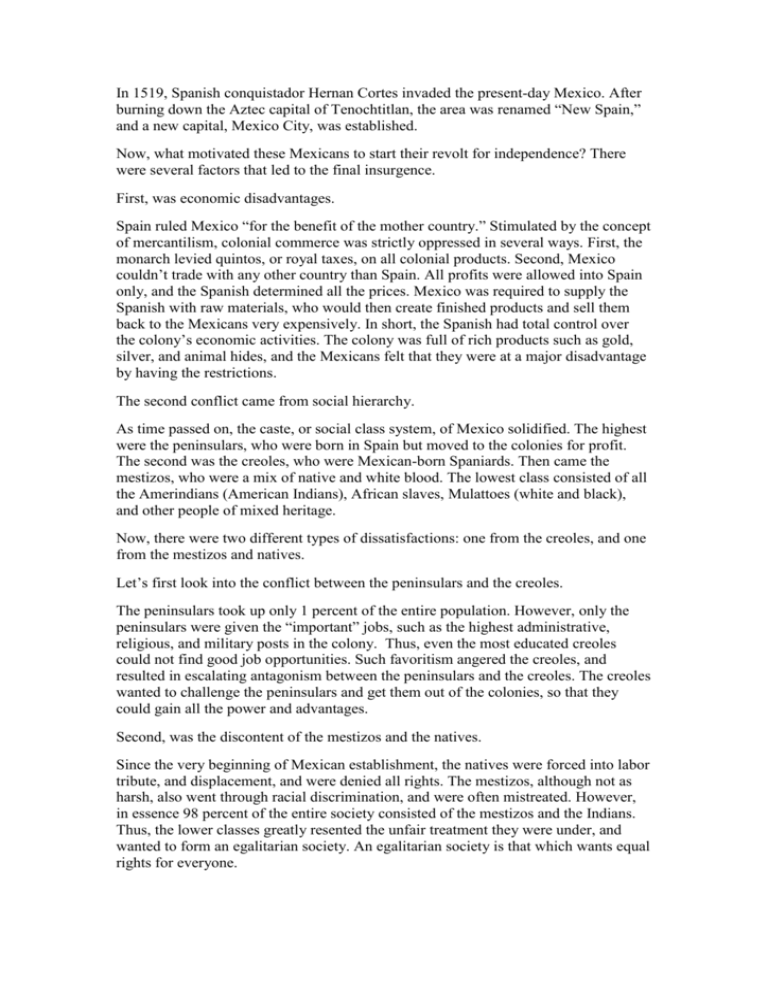
In 1519, Spanish conquistador Hernan Cortes invaded the present-day Mexico. After burning down the Aztec capital of Tenochtitlan, the area was renamed “New Spain,” and a new capital, Mexico City, was established. Now, what motivated these Mexicans to start their revolt for independence? There were several factors that led to the final insurgence. First, was economic disadvantages. Spain ruled Mexico “for the benefit of the mother country.” Stimulated by the concept of mercantilism, colonial commerce was strictly oppressed in several ways. First, the monarch levied quintos, or royal taxes, on all colonial products. Second, Mexico couldn’t trade with any other country than Spain. All profits were allowed into Spain only, and the Spanish determined all the prices. Mexico was required to supply the Spanish with raw materials, who would then create finished products and sell them back to the Mexicans very expensively. In short, the Spanish had total control over the colony’s economic activities. The colony was full of rich products such as gold, silver, and animal hides, and the Mexicans felt that they were at a major disadvantage by having the restrictions. The second conflict came from social hierarchy. As time passed on, the caste, or social class system, of Mexico solidified. The highest were the peninsulars, who were born in Spain but moved to the colonies for profit. The second was the creoles, who were Mexican-born Spaniards. Then came the mestizos, who were a mix of native and white blood. The lowest class consisted of all the Amerindians (American Indians), African slaves, Mulattoes (white and black), and other people of mixed heritage. Now, there were two different types of dissatisfactions: one from the creoles, and one from the mestizos and natives. Let’s first look into the conflict between the peninsulars and the creoles. The peninsulars took up only 1 percent of the entire population. However, only the peninsulars were given the “important” jobs, such as the highest administrative, religious, and military posts in the colony. Thus, even the most educated creoles could not find good job opportunities. Such favoritism angered the creoles, and resulted in escalating antagonism between the peninsulars and the creoles. The creoles wanted to challenge the peninsulars and get them out of the colonies, so that they could gain all the power and advantages. Second, was the discontent of the mestizos and the natives. Since the very beginning of Mexican establishment, the natives were forced into labor tribute, and displacement, and were denied all rights. The mestizos, although not as harsh, also went through racial discrimination, and were often mistreated. However, in essence 98 percent of the entire society consisted of the mestizos and the Indians. Thus, the lower classes greatly resented the unfair treatment they were under, and wanted to form an egalitarian society. An egalitarian society is that which wants equal rights for everyone. With all these dissatisfactions rising, the peninsulars managed to overthrow a creolesupportive viceroy and replaced him with a peninsular, much to the disappointment of the creoles. Added onto this, Napoleon had conquered Spain and the royal authorities were in confusion. So, the enraged creoles found the propitious moment of revolt. Essentially, the most heavily oppressed was As you can see, the complaints of the two groups were different, and therefore the two were not entirely supportive of each other throughout the revolution. Nonetheless, they did find a way to come together, as will be explained in the causes.

